Am I required by law to declare the energy performance of my building?
Understanding the new regulatory tools in place to increase energy efficiency of our buildings
July 4, 2022
Buildings are at the heart of our lives, they mark our daily life, and we spend more than 90% of our time in them1.
Therefore, it’s not surprising to hear that this sector is one of the most energy intensive. In the United States, it gobbles up more than 75% of the entire electricity production and nearly 40% of the total energy consumption for an annual bill estimated at 400 billion dollars2. On a global level, the sector is responsible for 40% of GHG emissions.
The energy efficiency of buildings is therefore a key budgetary and environmental issue, particularly when it comes to the commercial, institutional and industrial sectors, with buildings that consume even more energy than our homes.
Although this factor is increasingly considered for new constructions, truly energy-efficient buildings are still the exception to the rule. While it is distressing to see billions of dollars being wasted on "unnecessary" GHG emissions, it is encouraging to see that there is room for reduction while maintaining the same quality of service.
Description of measures for cities and building owners
Cities and government authorities are aware of the situation but remain unable to significantly mobilize the sector even after multiplying available incentives. Without the existence of formal obligations, many building managers are not interested enough in the efficiency of their buildings and thus miss out on many investments that are often very profitable and, above all, socially responsible.
This is what a panel of measures that is being deployed in North America and Europe proposes to change. Since we cannot act on what we do not measure, they are based on the following three elements:
- Building Energy Disclosure (BED)
Building Energy Disclosure is the mandatory disclosure of building energy consumption to authorities. The disclosure of data allows decision makers to identify action points, verify the effectiveness of certain measures and design effective strategies.
- Energy Benchmarking and Transparency
Energy Benchmarking and Transparency is benchmarking of buildings in the same industry with the results potentially made public.
Depending on the jurisdiction, reporting must also include water consumption and require energy audits.
Benchmarking allows building managers to understand the operational performance of their buildings relative to their industry. In addition, the real estate market now is now able to consider the real value of energy efficiency. Increasing the energy performance of buildings will thus reward owners of efficient buildings and encourage investment in energy efficiency improvements.
- Building Performance Standard
The Building Performance Standard is the definition of performance targets to be achieved by an activity sector before a date set by regulation.
The definition of performance targets imposes an obligation of results and a reference consumption target, but not an obligation of means, which remains at the discretion of the owners.
"The disclosure process that building owners will have to get used to represents an ocean of opportunities for communities and governments. Think about it, there's a direct correlation between any building energy disclosure and positive results for everyone. And it is probably the most logical thing we needed to do for our own good". - Dan Boucher, CEO & Founder vadiMAP
Current programs in North America and France
North America
In the United States, benchmarking is currently mandatory in New Jersey and California as well as in 41 cities including Miami, Chicago, San Francisco and Los Angeles.
In Canada, benchmarking is in effect in Ontario, Vancouver and Montreal.
Performance targets are in place in Washington State and Colorado, as well as in New York, Boston and Washington DC. In 2024, more than 30 cities will join the National BPS Coalition.
ENERGY STAR Portfolio Manager
In the U.S. and Canada, the disclosure and benchmarking process is based on the ENERGY STAR Portfolio Manager, which is a free online software tool developed by the EPA. From the data it receives, it calculates building energy intensity (GJ/m2) and normalizes it for weather conditions and activity factors that affect building energy use.
For certain types of activity, its database allows it to define a score from 0 to 100 representing the position of the building among comparable ones. The higher the score, the more energy efficient the building. A score of 80 means that only 20% of buildings in its sector are more efficient.
Examples of programs in the United States
In California since 2018, Bill 802 requires commercial and multi-residential buildings over 50,000 sq. ft. to report their energy consumption annually or face a fine between $500 and $2,000 per day. The City of Los Angeles adds water consumption and lowers the area limit to 20,000 square feet for commercial and residential and 7,500 square feet for its own buildings.
The City of Atlanta requires an annual declaration and an energy audit every 10 years for buildings over 25,000 sq. ft.
In Canada
In Montreal, the regulation focuses on GHG emissions and requires disclosure of energy consumption for commercial and institutional buildings over 15,000 m2 as of 2022 and over 2,000 m2 if owned by the city. The limit will increase to 5,000 m2 and will also apply to multi-residential buildings of more than 50 units in 2023 and more than 2,000 m2 and 25 units in 2024.
In Ontario since 2019, the benchmarking initiative includes water consumption for buildings over 100,000 sq ft, going down to 50,000 sq ft in 2023.
In France
In France, the “décret tertiaire” takes its name from the local designation of the service building sector to which this regulation applies. It targets buildings of more than 1,000 m2 with public access.
The regulation first requires the declaration of energy consumption from 2022 on a dedicated platform and sets targets to be achieved by decades. To meet its obligations, a building must reduce its consumption compared to a reference year by 40% in 2030, 50% in 2040 and 60% in 2050. It can also meet the regulation by reaching a reference consumption intensity for its sector of activity.
This performance standard is defined by law and is adjusted according to climate and activity parameters. For example, it is set at 117 kWh/m2/year for open-plan offices in Reims. Beyond the financial penalties of up to €7,500, the main incentive is the principle of "name and shame" through public display of non-regulatory buildings.
vadiMAP obviously
These measures, mainly implemented in large urban centres, are expected to become more widespread. It is inevitable that the pressure will increase to significantly improve the energy efficiency of buildings.
Whether through regulation or rising energy prices, buildings must find ways to optimize their energy consumption as soon as possible.
With this challenge in mind, we developed vadiMAP. By simulating the annual electrical and thermal behaviour of a building, vadiMAP determines the optimal constellation of measures for energy efficiency. This type of automated tool is essential to meet the immense demand.
Charles Girardet
Charles Girardet, M. Sc.
Special Projects Manager
vadiMAP
1) https://www.epa.gov/report-environment/indoor-air-quality#note1
2) https://www.energy.gov/eere/buildings/about-building-technologies-office

